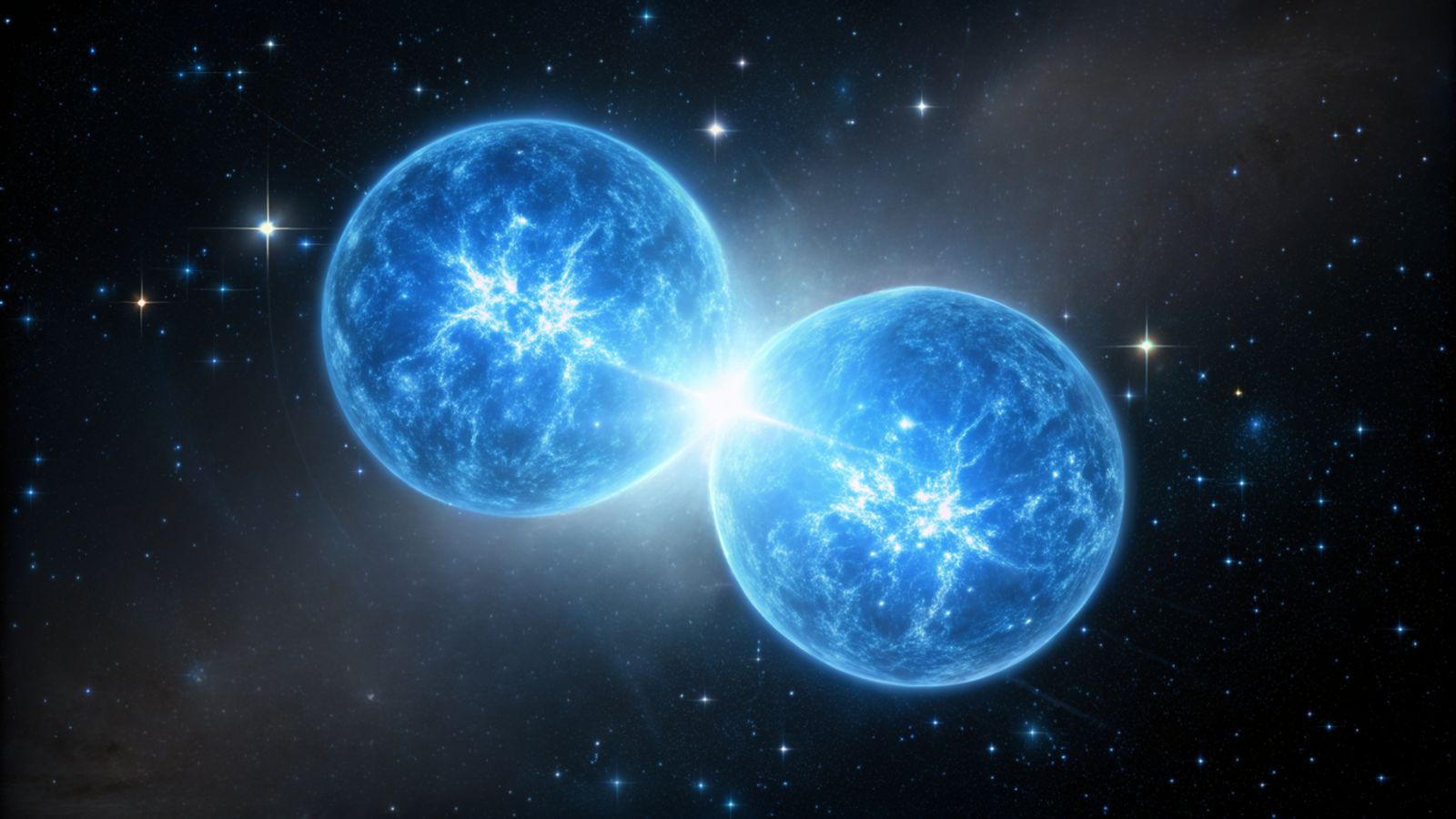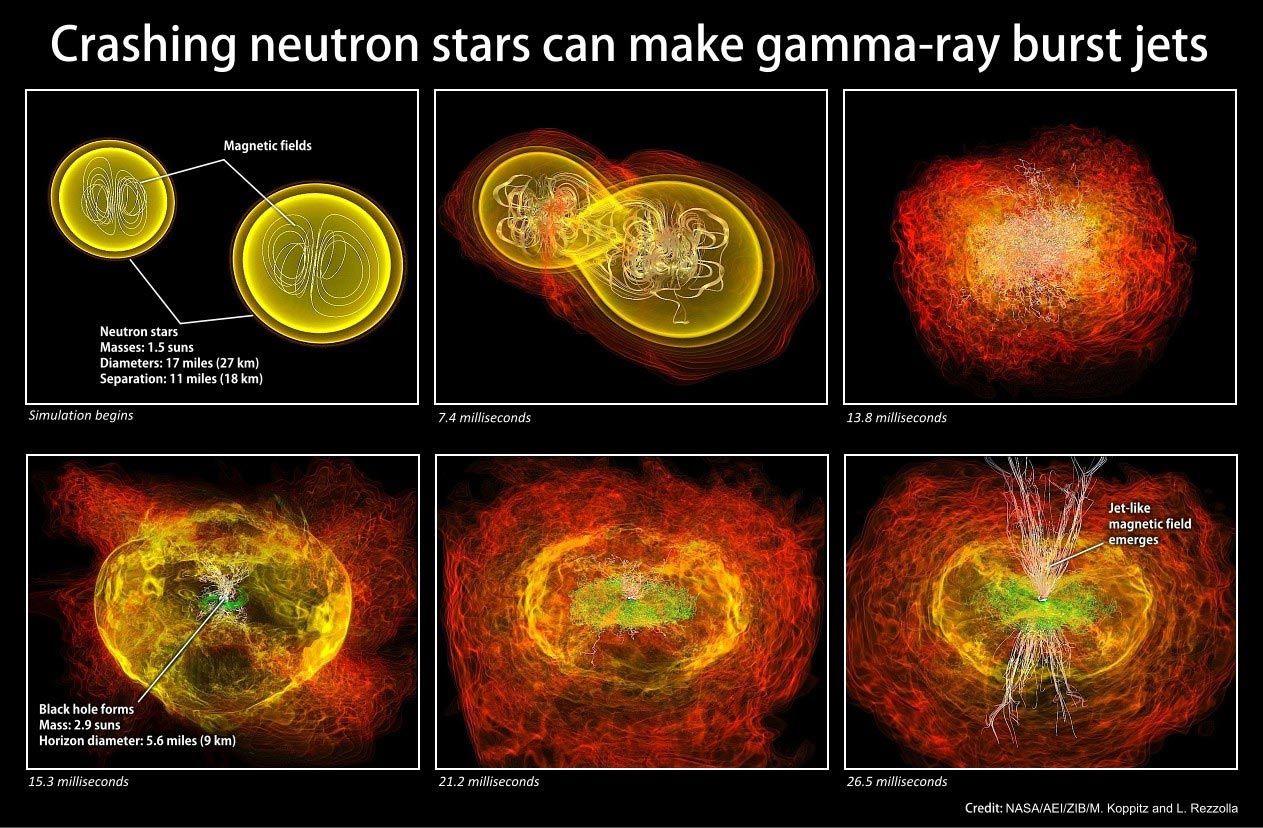The enigmatic origin of the most energetic cosmic rays ⚡
Follow us on Google News (click on ☆)
Ultra-high-energy cosmic rays (UHECRs) surpass in power anything humans can produce in laboratories. Their discovery dates back over 60 years, but their exact source remains a mystery. Glennys Farrar, a physicist at New York University, proposes a novel explanation linked to neutron star mergers.

According to Farrar's theory, these particles are accelerated in the turbulent magnetic flows resulting from neutron star mergers. This process, which precedes the formation of a black hole, also generates gravitational waves. These have already been detected by LIGO-Virgo collaborations, providing a potential avenue for validation.
The theory explains two enigmatic features of UHECRs: their extreme energy and the correlation between this energy and their electric charge. It suggests that the most energetic particles come from rare elements, such as xenon or tellurium, formed during these mergers.
This breakthrough opens new perspectives for cosmic research. It connects major astrophysical phenomena, like short gamma-ray bursts, to the production of rare elements. Future observations could confirm this model by searching for very high-energy neutrinos associated with gravitational waves.
The study, published in Physical Review Letters, relies on advanced computer simulations. It shows how magnetic fields, amplified during the merger, can structure jets capable of accelerating UHECRs. This work builds on data collected by various observatories worldwide.

These images show the merger of two neutron stars simulated with a new supercomputer model. Red colors indicate lower-density regions. The green and white ribbons and lines represent magnetic fields. The stars rapidly lose energy through gravitational waves and merge in less than 8 milliseconds. The magnetic field is then amplified and disordered. A black hole forms, and the magnetic field becomes more structured, potentially supporting the jets responsible for short gamma-ray bursts.
Credit: NASA/AEI/ZIB/M. Koppitz and L. Rezzolla.
Farrar emphasizes the importance of this discovery for understanding the universe. It provides a testable theoretical framework that could unify multiple areas of astrophysics. The coming years will be crucial for validating or disproving this hypothesis, with improvements in gravitational wave and cosmic ray detectors.
How do neutron star mergers produce rare elements?
Neutron star mergers are cosmic factories producing rare and heavy elements like gold or platinum. This process, called rapid neutron capture (r-process), occurs under extreme conditions of density and temperature.
During the merger, neutrons are released in large quantities and captured by atomic nuclei. This leads to the formation of unstable isotopes that later decay into stable elements. These nuclear reactions are so rapid that they cannot occur in ordinary stars.
The newly created elements are then scattered into space by the merger's shock waves. They enrich the interstellar medium, contributing to the chemical composition of future generations of stars and planets. This mechanism explains why these elements are relatively rare in the universe.
What role do magnetic fields play in neutron star mergers?
Magnetic fields play a key role in neutron star mergers. Initially, each star has its own magnetic field, often extremely intense. During the merger, these fields intertwine and amplify due to turbulence.
This amplification can reach extreme levels, creating complex magnetic structures. These structures can accelerate particles to phenomenal energies, like UHECRs. They can also channel part of the merger's energy into jets, responsible for short gamma-ray bursts.
After the black hole forms, the magnetic field reorganizes around it. Recent numerical simulations help better understand these dynamic processes and their observable signatures.